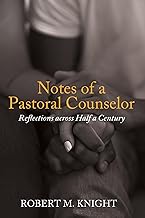I was on the phone the other day with my buddy, a Penn State alum. He is one of our nation’s “greatest generation,” having had his college career interrupted by his service in World War II. Our conversation could just as well have been about the recent/current scandal, here in Charleston, involving a Citadel graduate who has coached and taught, been a school administrator, foster parent and church youth group leader locally for the past ten years, a young man charged with multiple child sexual abuse crimes. But because of where my friend went to college, so many years ago, the tenor of our conversation had more to do with a similar scandal at his alma mater.
Except, the one question he asked me–it wasn’t what I’ve heard more of in recent days–how such a venerable institution as the Pennsylvania State University, in general, and arguably the most respected, if not idolized football coach in modern sports history, in particular, could allow such a travesty to have continued, with at least some awareness of the aberant behavior (on the part of yet another popular Penn State assistant football coach), for so long.
Rather, my friend’s question was this: “What causes someone to do something like that?” The “something” being, of course, the sexual abuse of children. As in the two cases I’ve referred to, specifically, the sexual molestation of young boys on the part of a trusted adult male mentor.
I was talking to my buddy on my cell phone, waiting in the car for my wife to come out of the grocery store. At which she did, just as he asked the question. So I told him my response would have to wait until he and I were together again. We’re both big sports fans and sometimes go to ball games together where, interestingly enough, we often talk about subjects far removed from necessarily anything athletic.
And while I’m hardly an expert at diagnosing and treating pedophiles, nor in the treatment of persons who have been sexually abused, I’ve been a mental health professional long enough to have spent considerable time with other mental health professionals who do have expertise in matters of this sort, learning from them, while also doing considerable reading on the subject and attending training sessions concerning sexual abuse with respect to both the abuser and the abused.
Here, then is what I will likely be explaining to my buddy in response to his question: “What causes someone to do something like that?” Which I’m sharing here, thinking that other laypersons (regarding mental health matters) might find such general information on such a painful subject helpful.
1. Much of the research on this troubling topic would seem to reveal how many sexual abusers have, themselves, been sexually abused. Sexual abuse can be perpetrated on the part of adults, teenagers, or even older children. And while the perpetrating of child sexual abuse may involve females, males appear predominant.
2. The causes of pedophilia (its etiology), however varied or complex, clearly reflect some crisis in the abuser’s life in terms of his psycho-sexual development. Something went wrong somewhere in relation to what would be considered reasonably normal, healthy development with respect to the abuser’s sexual identity, feelings and behavior (despite how defensively the pedophile may deny such feelings or protest such behavior). It is important, however, to note that no respected research has revealed any correlation between one’s sexual orientation and pedophilia. In both the Charleston and Penn State cases, for example, both alleged abusers/criminals are clearly understood to be heterosexual males.
3. With respect to the previous observation, some years ago I attended a workshop presented by the psychologist, Joseph LoPiccolo, a noted authority in treating the problem of aberant sexual behavior. In his presentation, Dr. LoPiccolo remarked that “a primary source of sexual stimulation for a pedophile is the Sears and Roebuck catalog–pictures of all those little kids in their underwear.”
4. At the time of his presentation, Dr. LoPiccolo was directing a treatment program for pedophiles in a Missouri prison. He reported that an approach his program was taking was to treat pedophiles with forms of aversion therapy. An example of this would be having a pedophile, connected to electrodes, observe pictures of youngsters which might simulate the pedophile’s sexual response. At which the perpetrator would then experience a mild to moderate electric shock.
5. While teaching for a number of years in a college degree program at two different nearby prisons, I encountered numerous pedophiles. And in interviewing these men, I noticed a common thread involving this particular dynamic: the correlation between how many of them had “acted out” in sexually exploitative and abusive ways toward children in proportion to how poorly they seemed able to manage notable times of stress in their lives. If such “acting out” behavior may have involved, in this case, the most devastating of consequences–exploiting the innocence and vulnerability of children–think of how many other forms of destructive and self-destructive behavior would seem to result from anyone’s apparent limitations in the self-care of exercising appropriate stress-management. Are you, for instance, familiar with an acronym they teach in Alcoholics Anonymous? H-A-L-T: hungry, angry, lonely, or tired. Indeed, if you’re addicted to whatever, it’s not usually hard to find some justification for acting on or out of your addiction, particularly under stressful circumstances.
6. The sexual abuse of children is rarely an isolated instance; if you will, a single sexual assault. It rather tends to manifest, almost universally, as a pattern of behavior.
7. Child sexual abusers, of course, need a context in which to cultivate connections with kids–churches, schools, little league sports, scouting and other kinds of clubs and social groupings involving children. Since kids who are abused, sexually, have typically been drawn into a trusting relationship with an abusive adult.
8. In this respect, then, it is certainly understandable how easily an ostensibly religious context can become perverted with respect to child sexual abuse. For example, one prison chaplain observed to me, once, that all the inmates who assisted with the prison’s chapel program–all of whom had, as well, been previously active in church life outside of prison–how they were convicted pedophiles, many of whom were ordained ministers. And one of my colleagues at the local mental health center once observed, “If you look in the waiting area and see some guy reading a Bible, it’s not unreasonable to suspect that he’s a sexual abuser.” For is there a more socially sanctioned way to try to deny one’s broken-ness than to hide behind an incongruent religious posture?
9. Older children may be exploited by sexual abusers who use recreational drugs as a ploy. One of my buddies, an alcoholic in recovery for many years, described being sexually abused by his sixth-grade public school teacher. “He got to me with cigarettes and beer,” my buddy said.
10. Rather than being socially isolated loners, child sexual abusers are more often attractive, winsome characters, imbued with considerable charisma–certainly in the eyes of children. Indeed, they may “love kids” in lots of important ways. But one of the ways is hardly “important.” It is, instead, devastating.


